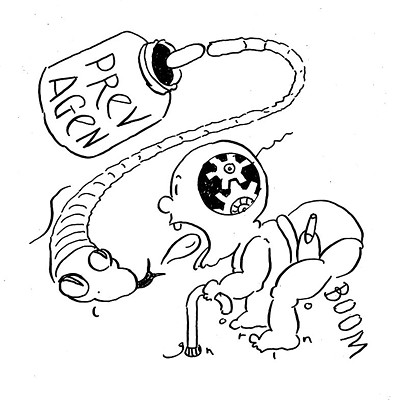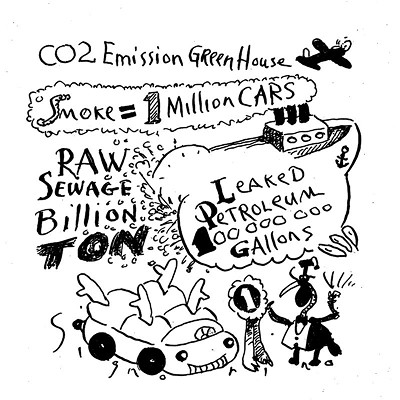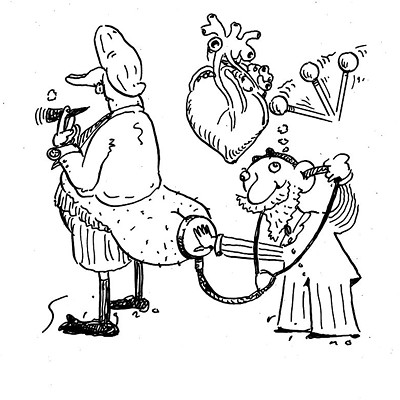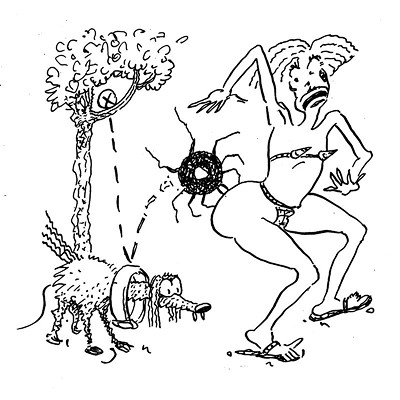We recently learned a rapist was loose in our neighborhood when my roommate got an an e-mail from her school that included a link to a police sketch. This got me thinking about the accuracy of police sketches. How much should I trust the rendering we saw? Has anyone done a study comparing sketches to the actual suspects who were later apprehended?
-Ken Yapelli, Brooklyn
There have been lots of studies, which I'll get to in a minute. The one thing I couldn't find was a systematic online comparison of suspect sketches and actual photos of the criminals. So I spent the afternoon rummaging around looking for examples involving well-known wrongdoers. What I came up with can be seen at tinyurl.com/sketches1. Ultimately the results confounded my expectations:
1. David Berkowitz, aka Son of Sam. This was the first set I found, and it seemed to confirm my initial biases: in my opinion, the face is too narrow, the cheekbones are too high, and the hair and eyebrows are wrong.
2. Ted Kaczynski, aka the Unabomber. The sunglasses in this famous drawing conceal so much I initially thought it could be anybody. In Kaczynski's mug shot he has a beard, but when I compared the prominent jawline with that of a younger, unshaven Kaczynski, the similarity was striking enough to make the sketch seem informative.
3. Timothy McVeigh, the Oklahoma City bomber. Not a perfect likeness by any stretch. But the eyes, nose, and mouth give you the right general idea. The FBI claims the drawing was close enough that hotel employees who saw it were able to identify McVeigh.
4. Ted Bundy, serial killer. The face is too narrow, but the eyes and eyebrows show a resemblance. Plus your overall impression is that this is a handsome fellow, which Bundy certainly was.
5. Bruno Hauptmann, the kidnapper of the Lindbergh baby. OK, the nose is a little off, but the eyes are a dead match.
The upshot is that sometimes police sketches work. More often, though, they don't. Though I'm not aware of any comprehensive survey, few doubt misses far outnumber the hits.
The problems are obvious. Eyewitnesses are stressed, forgetful, and often wrong-one study of 180 convicts freed by DNA evidence found more than 80 percent were mistakenly locked up due in part to erroneous identification. And the skill of the artists varies widely.
And often there's no artist at all. Instead, investigators may use a set of standardized facial features to piece together a composite portrait with witness assistance. Originally these were kits containing transparencies of different mouths, eyes, ears, etc, that could be mixed and matched; now the job is typically done with computers.
The choices are limited, and the cops in many cases have minimal training or experience. The results are often dismal. For example:
• In 2004 Arizona State undergrads viewed photographs of eight British celebrities and made 48 drawings of them using pro-grade composite software. Not one was successfully identified by a group of student volunteers in the UK. When other British students were asked to match the original photos with the composites, accuracy was about 6 in 10.
• When 80 students from the University of Stirling, in Scotland, were each shown ten celebrity composites made by local volunteers-a total of 800 views-there were only 22 correct IDs, an accuracy rate of about 3 percent. When students tried to match the composites with the original photographs, the accuracy rate was only 42 percent.
The latest development is computer software that morphs together drawings or composites produced with the help of different witnesses (or the same witness making several attempts) to generate a consensus. In the lab it seems to work pretty well; see tinyurl.com/sketches2. In the real world? Not too bad, I guess. Go look at Figure 1 in the document at tinyurl.com/sketches3 and judge for yourself.
So a wildly inaccurate composite arguably makes it easier for the bad guy to escape. On the other hand, police renderings do help once in a while, and if you've got a killer or rapist on the loose, what else are you supposed to do? Tell the public to keep a sharp eye out for somebody of medium height, medium complexion, and brown hair?
























